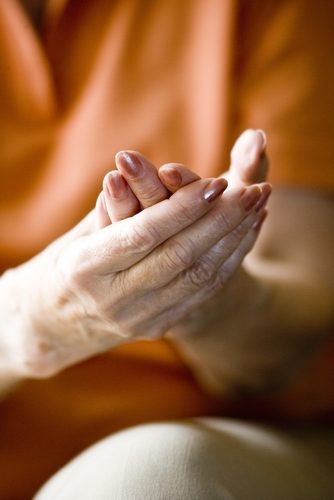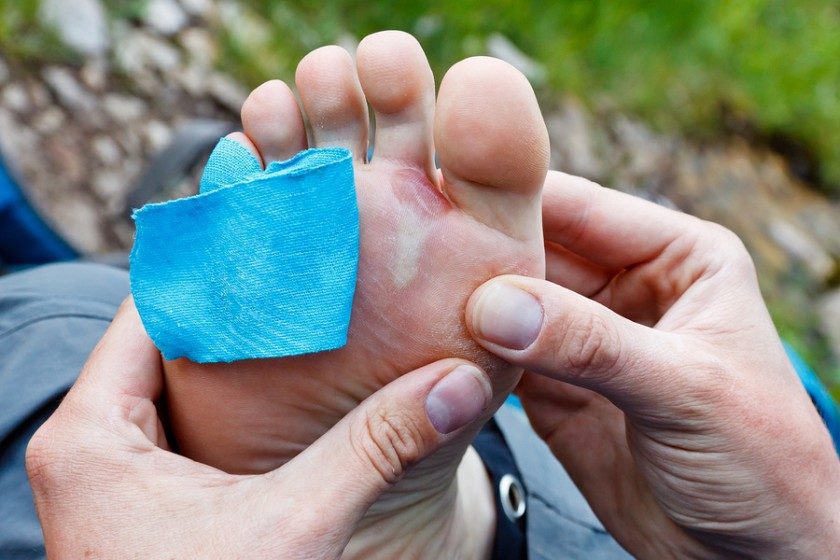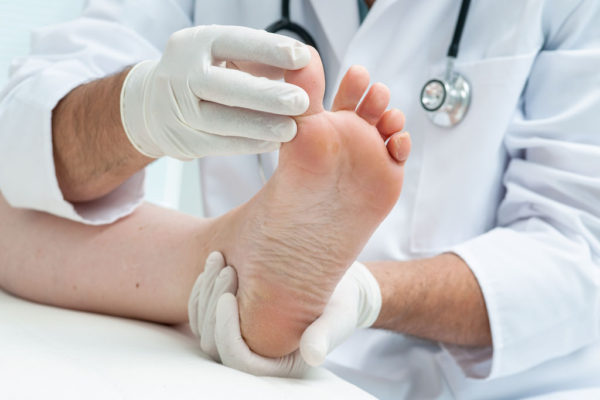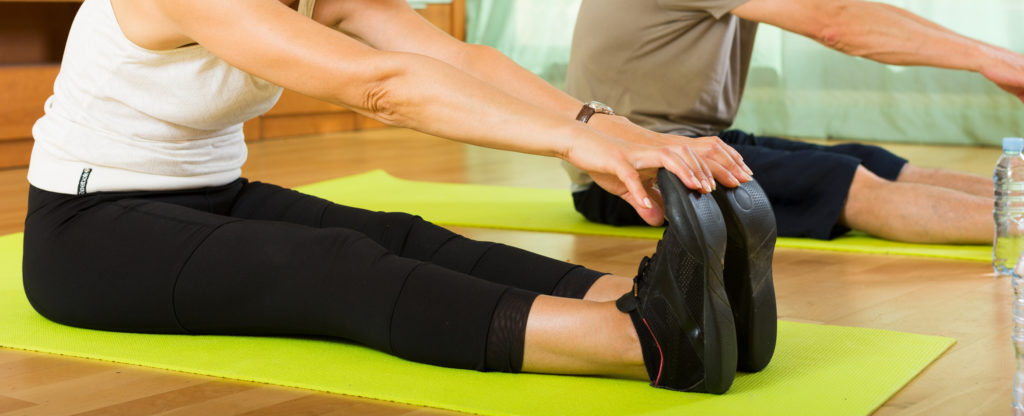Suffering from Raynaud’s Disease or Raynaud’s Syndrome, which are two slightly different ailments, is not just about having your hands or feet cold. It is a chronic disorder of the circulation of the blood in the extremities, which occurs periodically, in a case of exposure to the cold and, more rarely, in a case of emotional stress. The affected parts suddenly become white, cold, and sometimes insensitive or numb, because the blood is no longer circulating. The disease specifically affects the extremities, most often the fingers (the thumb is generally spared) and toes, but also, sometimes, the nose, lips, and lobes of ears or even nipples. A crisis can last from a few minutes to a few hours. It was a French physician, Maurice Raynaud, who first described the manifestations of this disease in 1862.
Raynaud’s Disease: How does the body react to the cold?
Normally, when exposed to cold, the body tries to reduce its heat loss by tightening the small arteries just under the skin (arterioles), this is called vasoconstriction. This mechanism reduces the exposure of the blood to the cold and increases its influx into the deep veins. This helps the body keep up its internal temperature. In people with Raynaud’s disease, this reaction is excessive. The nerves controlling the tightening of the arterioles are hypersensitive and do not induce normal vasoconstriction, but rather a sudden decrease in the caliber of the arteries (called a spasm). When the spasm ceases, the arterioles dilate again, which restores blood circulation.

Disease and syndrome, two different outcomes
There are two forms of the disease, depending on the cause.
- The primary form (Raynaud’s disease). This is the most frequent form, accounting for 90% of cases. Most of the time, the symptoms are mild: they create an unpleasant sensation, but do not cause damage to vessels or tissues. It occurs most often between the ages of 15 and 25 years. In about two-thirds of the cases, the disease resolves itself after a few years. It has also been found that its symptoms decrease during pregnancy. The cause of the primary form of Raynaud’s disease is unknown.
- The secondary form (Raynaud’s syndrome). This syndrome, also called the phenomenon of Raynaud, is much rarer and generally more serious. caused by diseases that reach the blood vessels, such as scleroderma.
Some events – or activities – can also cause damage to the vessels: frostbite or manipulation of tools that vibrate a lot or cause repeated impacts to the hands, such as taking certain long-term medications can also cause Raynaud’s syndrome.
Raynaud’s syndrome (secondary form) usually appears around the 40s. Severe cases require specialized medical follow-up in Rheumatology. According to data compiled in different countries, estimated that 3% to 5% of the population suffers from the disease or Raynaud’s syndrome.

Raynaud’s Disease Complications
- In severe cases, which are rare, the permanent diminution of the blood circulation can cause the deformity of the fingers or the toes.
- If one or more vessels come to completely clogged, painful ulcers may seem at your fingertips or even gangrene (tissue death). These two complications, difficult to treat, occur mostly in people with scleroderma.
Raynaud’s Symptoms
A crisis can last from a few minutes to a few hours and result in one or more of the following symptoms:
- A change in the color of the skin in the affected area, which often passes from natural rose to white when blood circulation decreases in the arteries. In this first phase of the crisis, there is often numbness and cooling, with or without loss of sensitivity.
- Sometimes the affected part turns blue, indicating that it is no longer supplied with oxygen.
- When the affected parts warm-up or the stress fades, you can feel tingling, pulsing, and pain (more rarely). Sometimes there is a slight swelling and redness.
Note: The symptoms are more severe, more intense, and last longer in patients with Raynaud’s syndrome. In people affected by diseases associated with this syndrome, other symptoms specific to these diseases are generally present.

People at Risk
- Women are more affected than men: between 75% and 90% of the cases of Raynaud’s disease are women aged 15 to 40 years.
- People with a direct family member (father, mother, brother, sister) affected by the disease: 30% are also affected by Raynaud’s syndrome
- People suffering from certain autoimmune diseases: 90% of people with scleroderma, 85% of people with the Sharp disease (mixed connective tissue disease), 30% of people with Gougerot-Sjogren syndrome, and 30 % Of people with lupus are also affected by Raynaud’s syndrome.
- People with rheumatoid arthritis, carpal tunnel syndrome, atherosclerosis, thyroid disorders, or Buerger’s disease are also at higher risk than the average.
- Those who expose their hands to repeated trauma: office workers (keyboard), pianists, and regular users of the palm of the hand as “tools” for crushing, squeezing, or twisting objects (tilers or bodybuilders, for example).
- Plastic workers whose hands are exposed to vinyl chloride may suffer from Raynaud’s syndrome associated with scleroderma. Note that worker protection measures are now more right and the risk of toxic exposure is low, according to the Canadian Center for Occupational Health and Safety.
- Fishmongers (alternating hot and cold and handling ice or any other refrigerant).
- Workers using vibration-generating power tools (chain saws, biting hammers, rock hammers) are highly vulnerable. From 25% to 50% of the affected and these percentages can reach 90% among those with 20 years of experience.
- People who have taken or are to take medicines with the effect of contracting blood vessels: beta-blockers (used to treat hypertension and heart disease), ergotamine (used to treat migraine and Headaches), some chemotherapy treatments.

Raynaud’s Disease Prevention
1. Protect yourself from the cold
This is the best protection available.
Outside:
Dress warmly in winter. Superimposing layers of thin clothing are more effective than wearing a single thick layer to keep the body warm. Of course, it is essential to wear gloves or mitts and warm socks, but it is also necessary to cover the rest of the body because a drop in internal temperature is enough to trigger a crisis. A hat is also essential because the body loses much heat through the scalp. When one has to go outside for a long time or in very cold weather, the use of hand warmers and toe heaters is a good trick. These small sachets contain chemicals that, once agitated, generate heat for a few hours. We can put them in his mittens, your pockets, hat.
Some intended for boots, provided they are not too tight. They are usually sold in sporting goods stores, hunting, and fishing. In summer, sudden changes in temperature are avoided, such as when entering an air-conditioned area and being very hot outside. To reduce thermal shock, always think about having extra clothing and gloves with you when you’re going to the grocery store, for example, or any other air-conditioned place.
Inside:
- In summer, if the accommodation is air-conditioned, keep the air conditioning to a minimum.
- Wear gloves before handling refrigerated and frozen products.
- Use an insulating container when taking cold drinks.
- In winter, if the seizures occur at night, wear gloves and socks to bed.
2. No smoking
In addition to all its other harmful effects, smoking has direct and quite undesirable consequences on people who suffer from the disease or Raynaud’s syndrome. Smoking triggers the tightening of blood vessels, which increases the risk of crisis, as well as the intensity and duration of the symptoms. In addition, smoking increases the risk of obstruction of small vessels, which can cause gangrene. Smoking absolutely avoided. See the card smoking.
3. Better management of stress
Learning how to better manage stress can greatly help people whose illnesses triggered by this cause. Check out our stress report for more information.
4. Other measures
- Do physical activity regularly. This warms the body, improves blood circulation, and helps in relaxing.
- Be vigilant to avoid injuries to the hands or toes.
- Do not wear jewelry or tight accessories on the hands (rings, bracelets, etc.), ankles, or feet (shoes).
- When working with vibrating tools, use only those that are well maintained and in good working order. Further guidance provided by the Canadian Centre for Occupational Health and Safety’s online document.
- Avoid caffeine because it has a vasoconstrictor effect.
- Avoid drugs that cause vasoconstriction, such as over-the-counter decongestants that contain pseudoephedrine (e.g Sudafed® and Claritin®) or phenylephrine (Sudafed PE®), certain Ephedrine, also known as Ma Huang, and their sale banned in Canada) and migraine medicines containing ergotamine.
- Patients who suffer from Raynaud’s syndrome (secondary form) should avoid the contraceptive pill. Indeed, the vessels of these patients predisposed to obstructions, and the contraceptive pill increases this risk.


